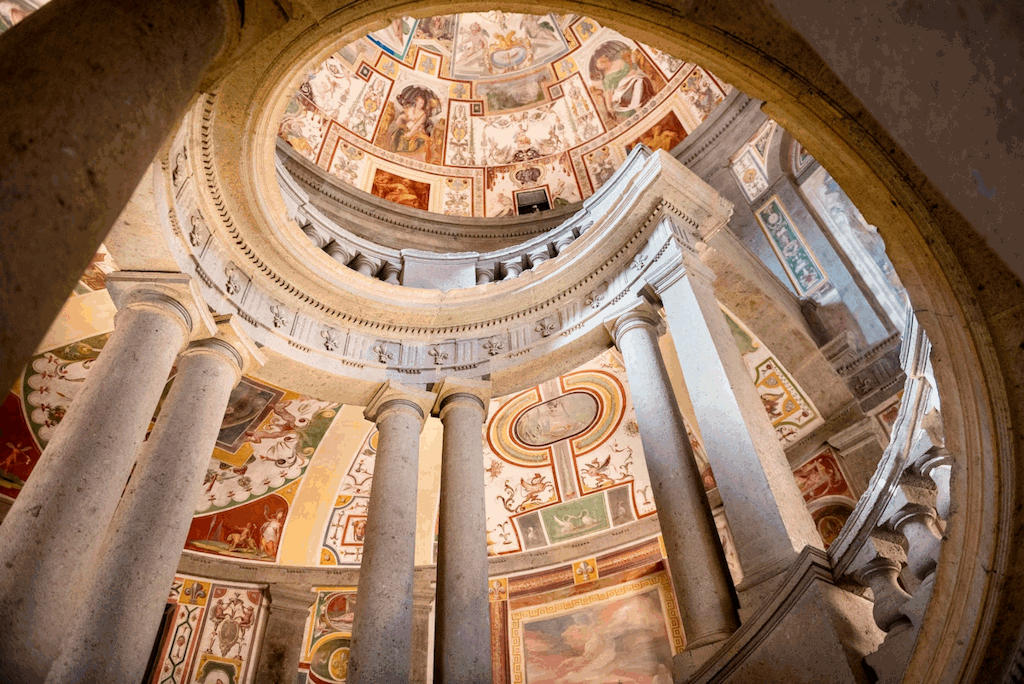Key Characteristics of Renaissance Art and Architecture:
- Humanism and Individualism: Renaissance art and architecture celebrated the human form, intellect, and individuality. Artists sought to depict the human figure realistically and anatomically accurate, emphasizing its beauty and grace. Humanist ideals, emphasizing the importance of the individual, influenced the portrayal of subjects and the exploration of human emotions.
- Perspective and Realism: One of the defining features of Renaissance art was the mastery of perspective. Artists developed techniques to create depth and spatial illusion, giving their works a sense of three-dimensionality. Realism and naturalism were also emphasized, with attention to detail, accurate proportions, and the use of light and shadow to create lifelike representations.
- Classical Influence: Renaissance artists and architects drew inspiration from the art and culture of ancient Greece and Rome. They studied classical texts, sculptures, and architectural treatises, adopting elements such as columns, arches, and domes in their works. Classical motifs and themes were also incorporated, reflecting a fascination with the ideals of ancient civilizations.
- Harmonious Proportions and Balance: Renaissance art and architecture sought to achieve a sense of harmony, balance, and mathematical precision. Artists and architects employed principles of proportion, symmetry, and geometry to create aesthetically pleasing compositions. This pursuit of beauty and order was seen as a reflection of divine perfection.
Notable Artists and Architects of the Renaissance:
- Leonardo da Vinci (1452-1519): Leonardo da Vinci, renowned as a polymath and one of the greatest artists of the Renaissance, exemplified the period's spirit of curiosity and intellectual exploration. His iconic works, such as the Mona Lisa and The Last Supper, showcase his mastery of technique, use of sfumato (subtle blending of colors), and ability to convey complex emotions.
- Michelangelo Buonarroti (1475-1564): Michelangelo was a prodigious artist and sculptor, known for his exceptional talent and immense contributions to Renaissance art. His sculptures, including the iconic David and the Pietà, demonstrate his ability to infuse marble with lifelike qualities. He also painted the ceiling of the Sistine Chapel, depicting biblical scenes with astonishing detail and grandeur.
- Donato Bramante (1444-1514): Bramante was an influential architect who played a significant role in the development of Renaissance architecture. His design for the Tempietto, a small circular church in Rome, showcased a revival of classical architectural principles and became a model for subsequent Renaissance architecture.
- Filippo Brunelleschi (1377-1446): Brunelleschi is considered a pioneer of Renaissance architecture. His innovative designs and engineering prowess are exemplified in the construction of the dome of Florence's Santa Maria del Fiore cathedral. The dome showcased his mastery of architectural proportion and engineering ingenuity.
Lisbon.vip Recommends
Notable Examples of Renaissance Art and Architecture in Portugal:
- Jerónimos Monastery (Mosteiro dos Jerónimos), Lisbon: Located in the Belém district of Lisbon, the Jerónimos Monastery is a UNESCO World Heritage site and a masterpiece of Renaissance architecture. Built in the 16th century, it exhibits a combination of Manueline and Renaissance elements, known as Manueline-Renaissance. The monastery's facade features intricate stonework, symmetrical windows, and classical motifs such as columns and arches. The delicate ornamentation and attention to detail make it a remarkable example of Renaissance influence in Portuguese architecture.
- Palace of Mafra (Palácio Nacional de Mafra): Situated in the town of Mafra, near Lisbon, the Palace of Mafra is a grand monumental complex constructed during the 18th century. While primarily influenced by the Baroque style, it incorporates Renaissance elements in its architecture. The palace's facade showcases symmetrical lines, elegant proportions, and classical ornamentation, reminiscent of Renaissance ideals. The library within the palace is particularly noteworthy, with its vast collection of books and stunning architectural design.
- Évora Cathedral (Sé Catedral de Évora): The Évora Cathedral, located in the city of Évora, is one of the largest medieval cathedrals in Portugal. While primarily a Gothic structure, it underwent renovations during the Renaissance period, incorporating Renaissance elements into its design. The cathedral's main portal showcases classical motifs, such as Corinthian columns and arches, representing the Renaissance influence on the cathedral's facade. The interior features a blend of Gothic and Renaissance styles, including ornate chapels and elegant vaulting.
- Coimbra University (Universidade de Coimbra): Founded in the 13th century, Coimbra University is one of the oldest universities in the world and a significant example of Renaissance architecture in Portugal. The Joanine Library, built during the 18th century, is a highlight of the university complex. The library's design incorporates Renaissance features, including a grand entrance with classical columns and an elaborately decorated interior. The ornate bookcases, painted ceilings, and intricate woodwork reflect the influence of Renaissance aesthetics.
Legacy and Significance:
The Renaissance left an indelible mark on the world of art and architecture. Its emphasis on humanism, perspective, and classical influence revolutionized artistic expression and architectural design. The legacy of Renaissance art and architecture can be seen in subsequent periods, such as the Baroque and Neoclassical eras, which built upon and adapted the ideas and techniques developed during this transformative period.The Renaissance was a golden age of artistic and architectural innovation, characterized by humanist ideals, a revival of classical influence, and a pursuit of beauty and harmony. It produced remarkable artists and architects whose works continue to captivate and inspire us today. The Renaissance represents a pivotal moment in history when creativity, intellect, and cultural exploration flourished, leaving an enduring legacy that continues to shape and influence the world of art and architecture.



